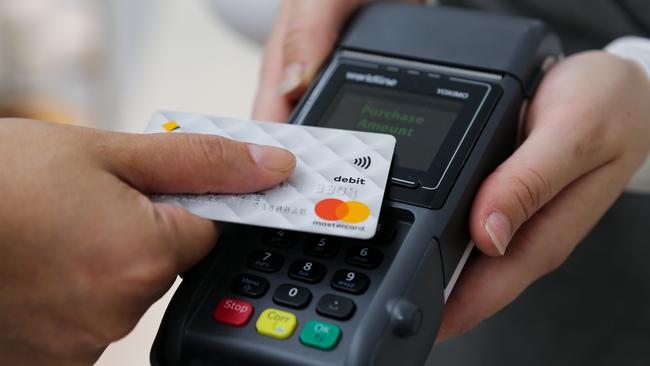Australians rack up eye watering levels of debt over Christmas
Some Australians are facing huge debts following a record credit card spend over the Christmas period.
Business Breaking News
Don't miss out on the headlines from Business Breaking News. Followed categories will be added to My News.
Australians racked up an insane amount of personal credit card debt over the Christmas period, leaving many households unable to pay off their ballooning bills, new research shows.
Fresh figures released by the Reserve Bank of Australia show the value of credit card transactions hit a record high of $28.1bn during December, with a massive $17.8bn now attracting interest rate charges.
In total, credit card and debit card transactions amounted to more than $80bn for the month, up $882.5m on November.
According to Canstar’s analysis of the RBA data, debt accruing interest on personal credit cards rose by over $236m from the previous month and more than half a billion dollars from this time last year.
Canstar data insight director Sally Tindall said this credit card debt incurring interest was on the rise due to pre-Christmas spending in a cost of living crisis.

“With the value of credit card transactions also hitting a record high in December, the national addiction to credit card debt is likely to get worse, before it gets better,” she said.
“If you have dug yourself into a credit card hole, it’s worth getting on to it quickly.
“One of the first things to do is try and go cold turkey so you’re not adding to the debt. If that means taking the scissors to the card, then so be it.”
While many Australians use credit cards to gain loyalty points and other rewards, for anyone who has leftover debt they will be paying a staggering high interest rate.
According to Canstar, the average credit card rate is an eye-watering 18.59 per cent, which is also the highest on record since the RBA started keeping track in 2019.
Canstar warns the RBA’s highly anticipated rate cut in February when the RBA is tipped to drop the cash rate from 4.35 to 4.10 per cent, is not typically passed onto credit card customers.

Ms Tindall said anyone facing mounting credit card debts should sit down and come up with a plan to pay back the debt.
“If you’ve got a mountain of credit card debt, and a rubber arm when it comes to spending at the shops, consider getting off the revolving debt treadmill by switching your balance to a personal loan,” she said.
“This option forces you to pay the debt off in full within a set time frame, usually without the ability to add to the debt.”
Alternatively Ms Tindall said customers could switch to a lower rate option, with nine providers offering at least one credit card with a purchase rate under 10 per cent.
“Another option is to switch to a zero per cent balance transfer credit card,” she said.
“These cards typically charge no interest on existing debt for up to 30 months, giving you a bit of breathing space to get your finances back on track.
“However, while balance transfer deals can seem like a white knight, they are usually full to the brim with traps that can potentially land you in more hot water if you’re not across the fine print and fail to pay off the debt within the honeymoon period.”
Originally published as Australians rack up eye watering levels of debt over Christmas




